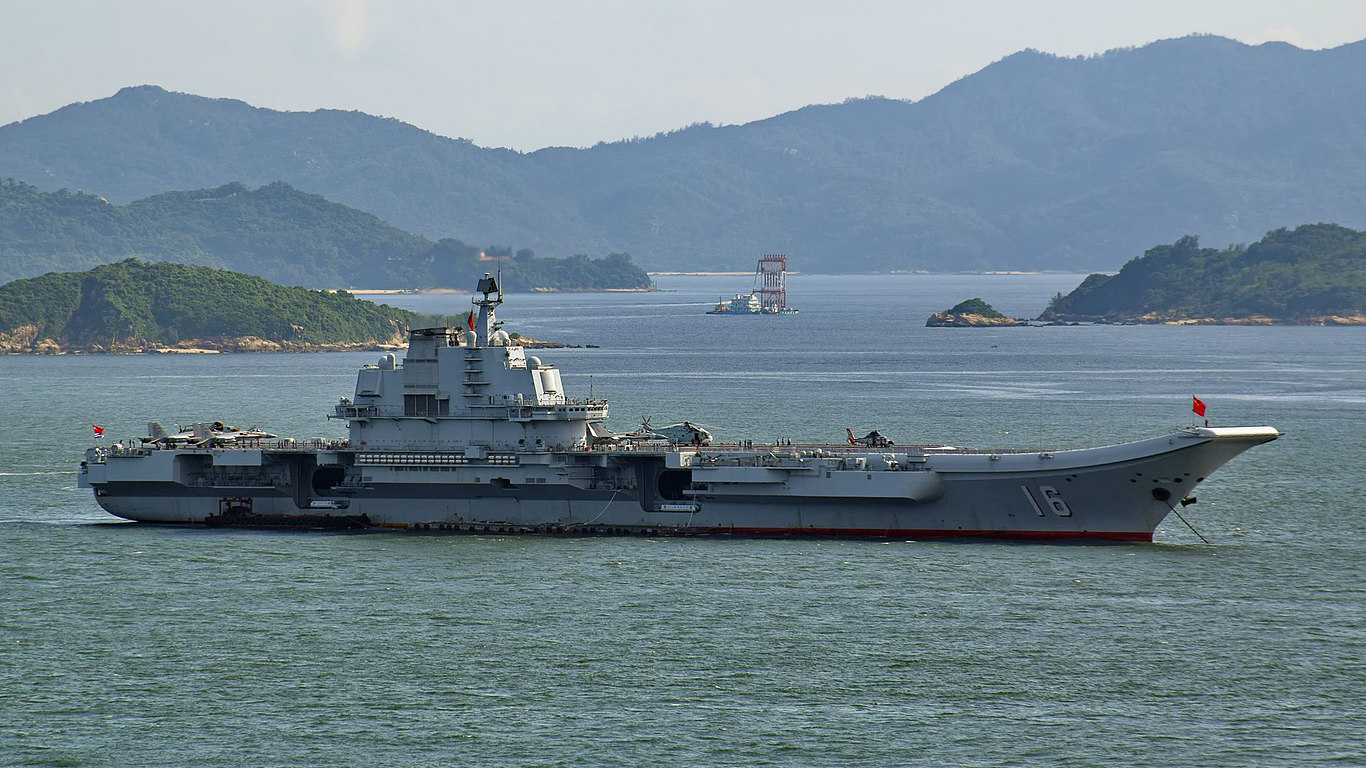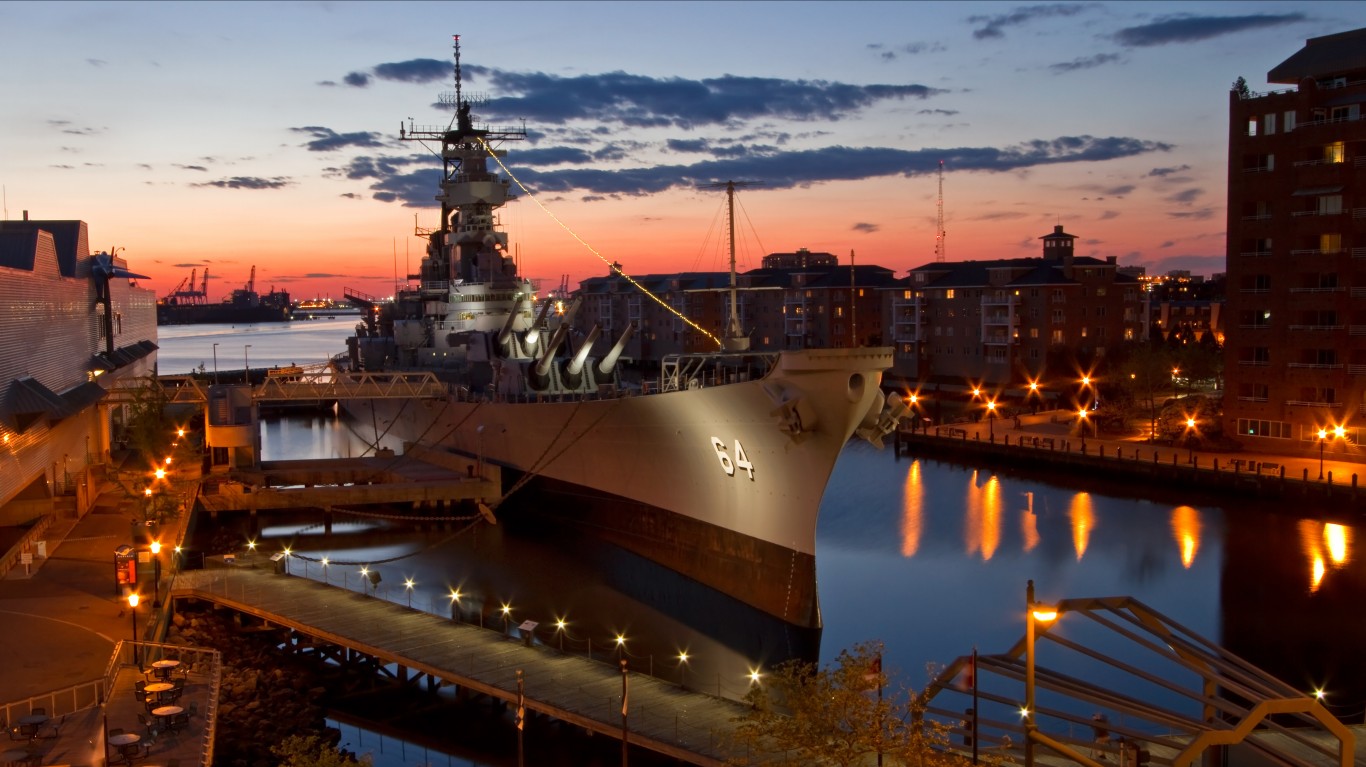
The United States has historically held the title of the world’s most dominant navy since the end of World War II. But according to at least one measure, this supremacy is no longer absolute. China now possesses a larger fleet when considering the total number of ships, although the United States still maintains a leading position when factoring in size and strength. The U.S. has the world’s largest warships — American aircraft carriers. China has also ventured into carrier construction, currently having two in operation and one more under construction. (These are the six nations besides the United States with aircraft carriers.)
The older of the two U.S. carrier classes is the Nimitz-class carrier, named in honor of World War II Pacific fleet admiral Chester Nimitz. This class, first launched in 1975, saw the commissioning of ten carriers. They measure 1,092 feet in length, displace 100,000 long tons, reach a maximum speed of 30 knots, and generate 260,000 shaft horsepower from their engines. With a crew of approximately 6,000, each carrier came at a cost of approximately $9 billion. (These are the states with the most veterans.)
Replacing the Nimitz-class carriers are the Gerald R. Ford-class carriers, of which the Navy intends to have ten eventually. They share similar dimensions with their predecessors, measuring 1,092 feet in length and having a comparable displacement. The price tag for these new carriers is estimated at around $12 billion each, with a crew complement of approximately 4,000. The first four carriers in this class have already been named: Gerald R. Ford (commissioned in 2017), John F. Kennedy (scheduled for 2024), Enterprise (scheduled for 2028), and Doris Miller (scheduled for 2032).
However, the Navy has encountered various issues during the early stages of constructing the Ford-class carriers. According to the Congressional Research Service, “In addition to challenges in building, testing, and certifying the ship’s weapon elevators, the Navy reportedly has been working to address problems with other systems on the ship, including its propulsion and electrical systems.”
Beyond these two U.S. carrier classes, the largest warships in the world belong to China, Russia, and France. (These are America’s largest military bases around the world.)
To determine the world’s largest warships, 24/7 Wall St. conducted a review of ship lengths worldwide, using data from Military Machine. Information regarding ship class, name, and country of origin is also sourced from Military Machine.
Click here to see the world’s largest warship
11. Izumo-Class Helicopter Destroyer
> Country: Japan
> Length (in feet): 814
[in-text-ad]
10. Kirov-class Cruiser
> Country: Russia
> Length (in feet): 827
9. Wasp-Class Amphibious Assault ship
> Country: United States
> Length (in feet): 843
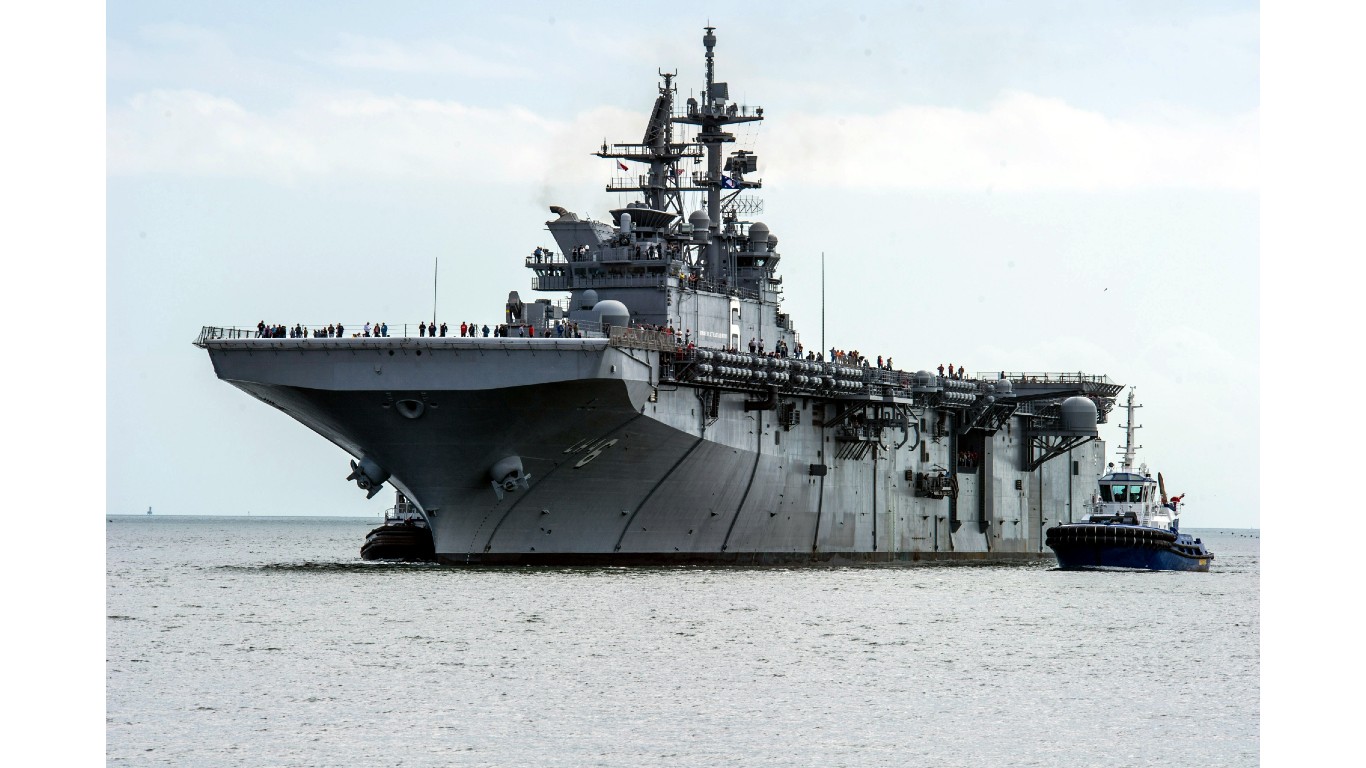
8. America-Class Amphibious Assault Ship
> Country: United States
> Length (in feet): 844
[in-text-ad-2]
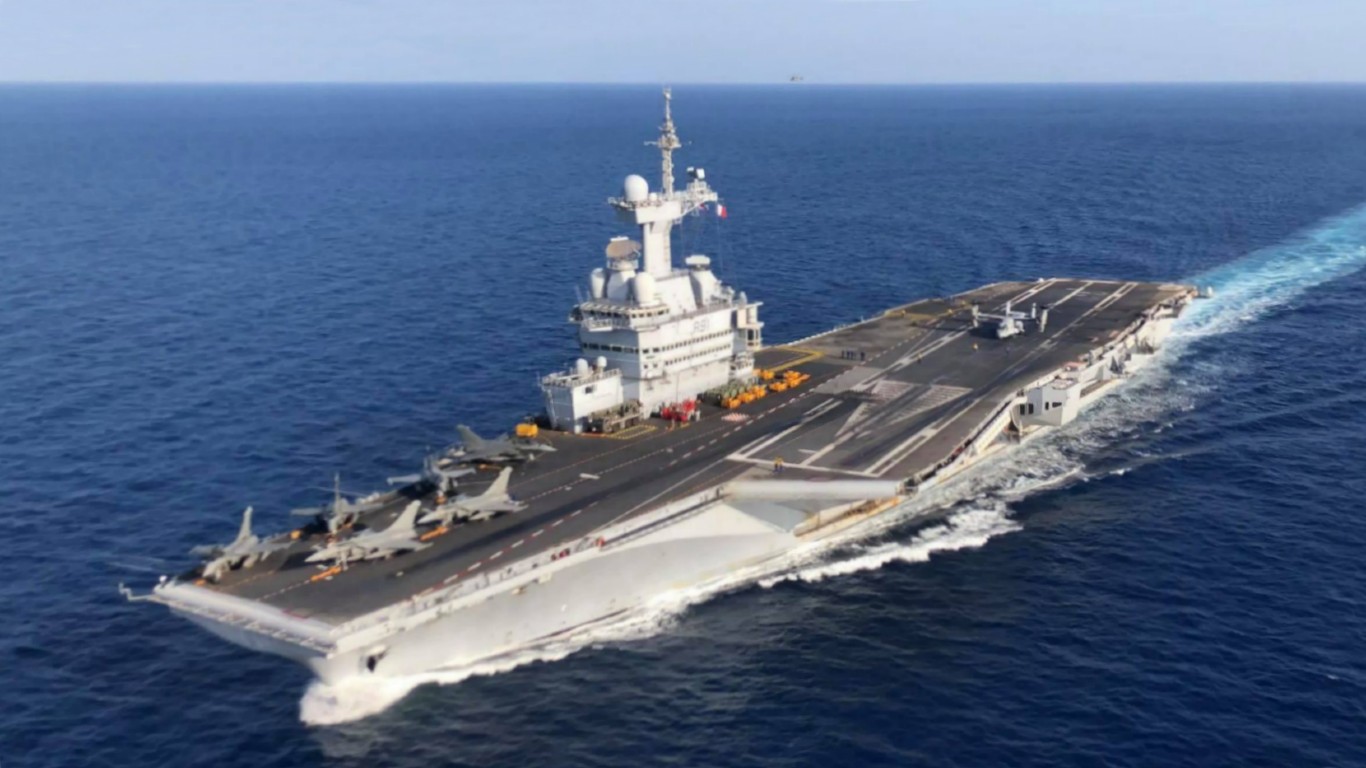
7. Charles De Gaulle-Class Aircraft Carrier
> Country: France
> Length (in feet): 858
6. Clemenceau-Class Aircraft Carrier
> Country: France
> Length (in feet): 869
[in-text-ad]
5. Indian-Modified Kiev-Class Carrier
> Country: India
> Length (in feet): 896
4. Chinese Completed Kuznetsov-Class Aircraft Carrier
> Country: China
> Length (in feet): 999
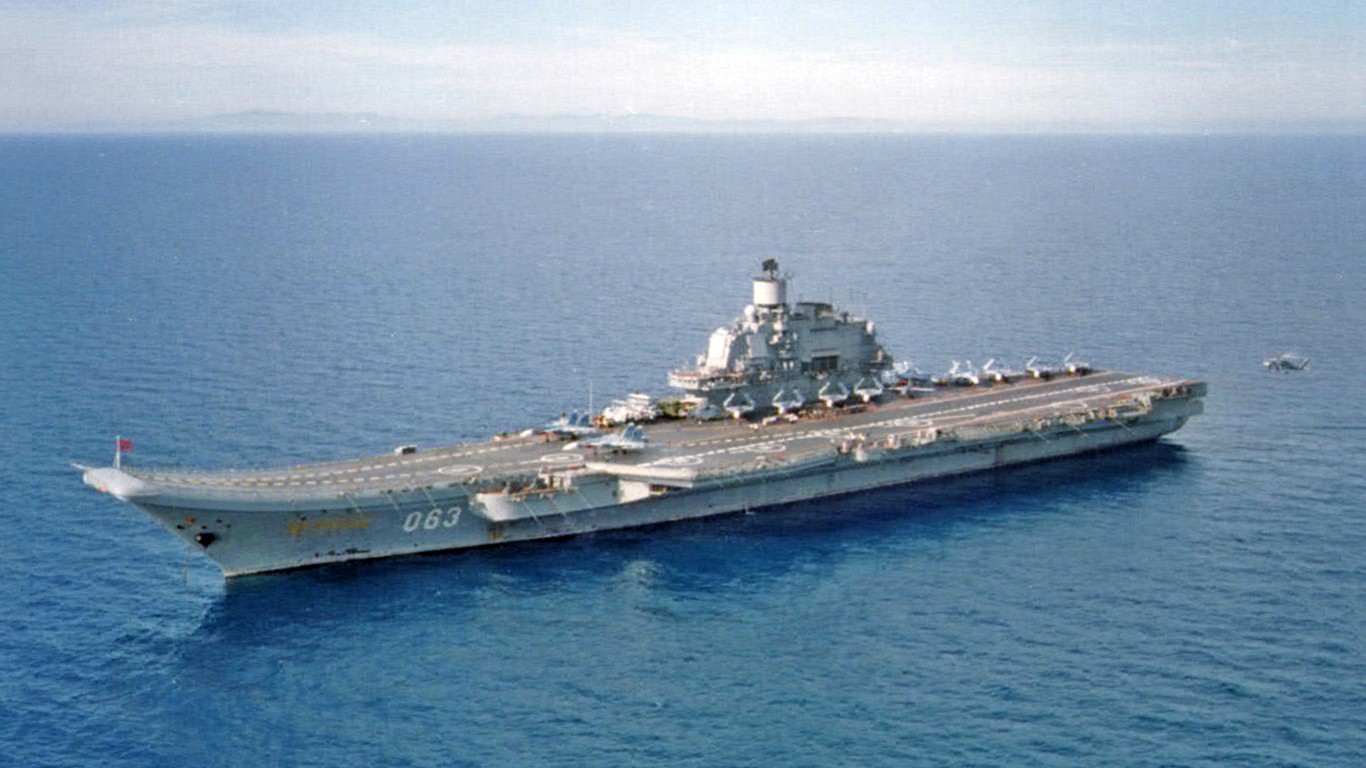
3. Kuznetsov-Class Carrier
> Country: Russia
> Length (in feet): 1,001
[in-text-ad-2]
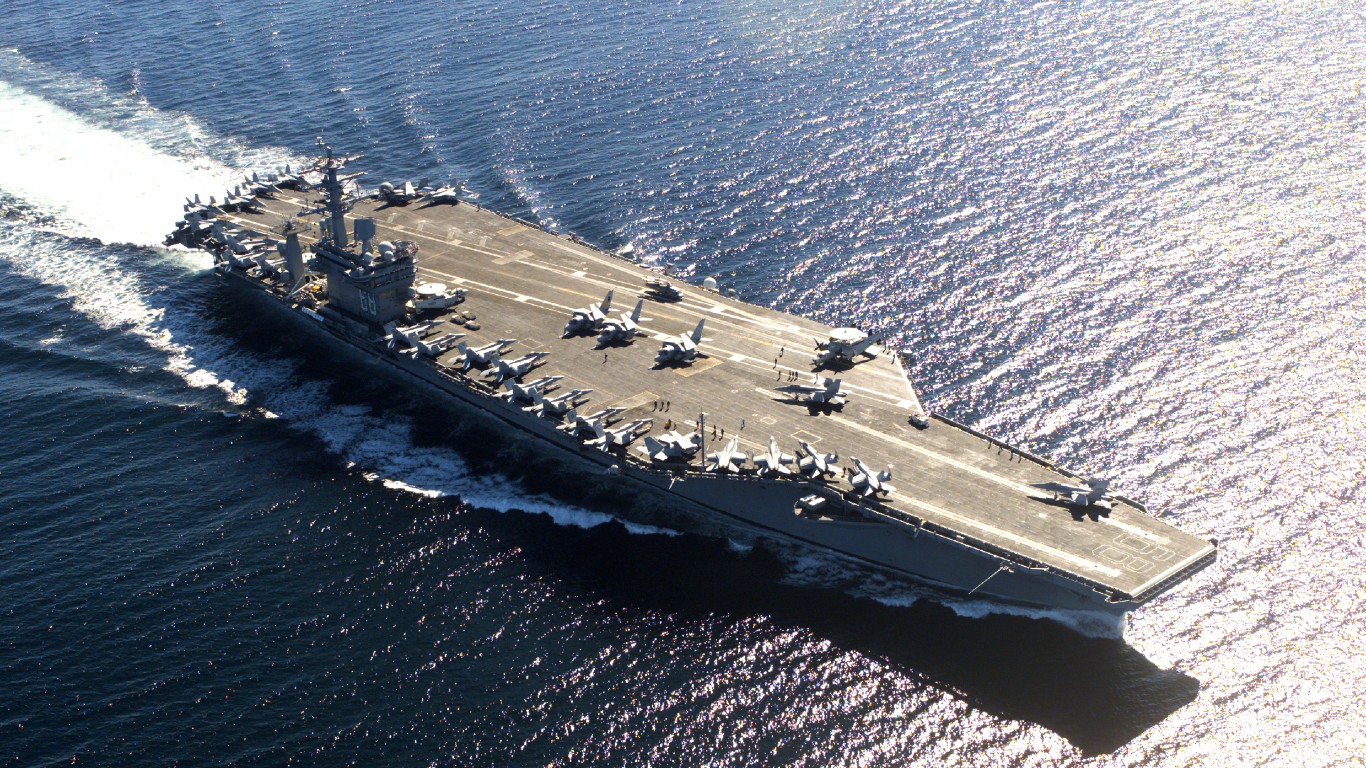
2. Nimitz-Class Aircraft Carrier
> Country: United States
> Length (in feet): 1,092
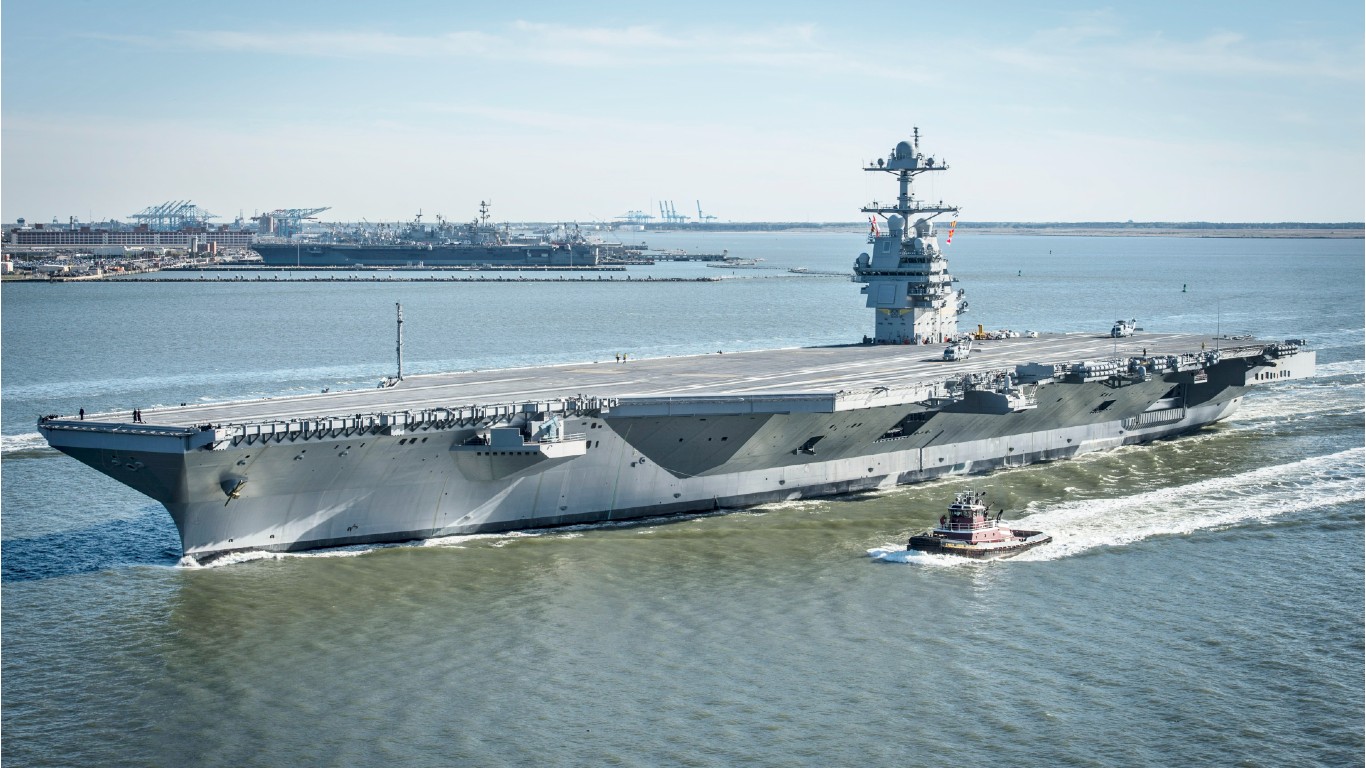
1. Ford-Class Aircraft Carrier
> Country: United States
> Length (in feet): 1,092
Cash Back Credit Cards Have Never Been This Good
Credit card companies are at war, handing out free rewards and benefits to win the best customers. A good cash back card can be worth thousands of dollars a year in free money, not to mention other perks like travel, insurance, and access to fancy lounges. See our top picks for the best credit cards today. You won’t want to miss some of these offers.
Flywheel Publishing has partnered with CardRatings for our coverage of credit card products. Flywheel Publishing and CardRatings may receive a commission from card issuers.
Thank you for reading! Have some feedback for us?
Contact the 24/7 Wall St. editorial team.
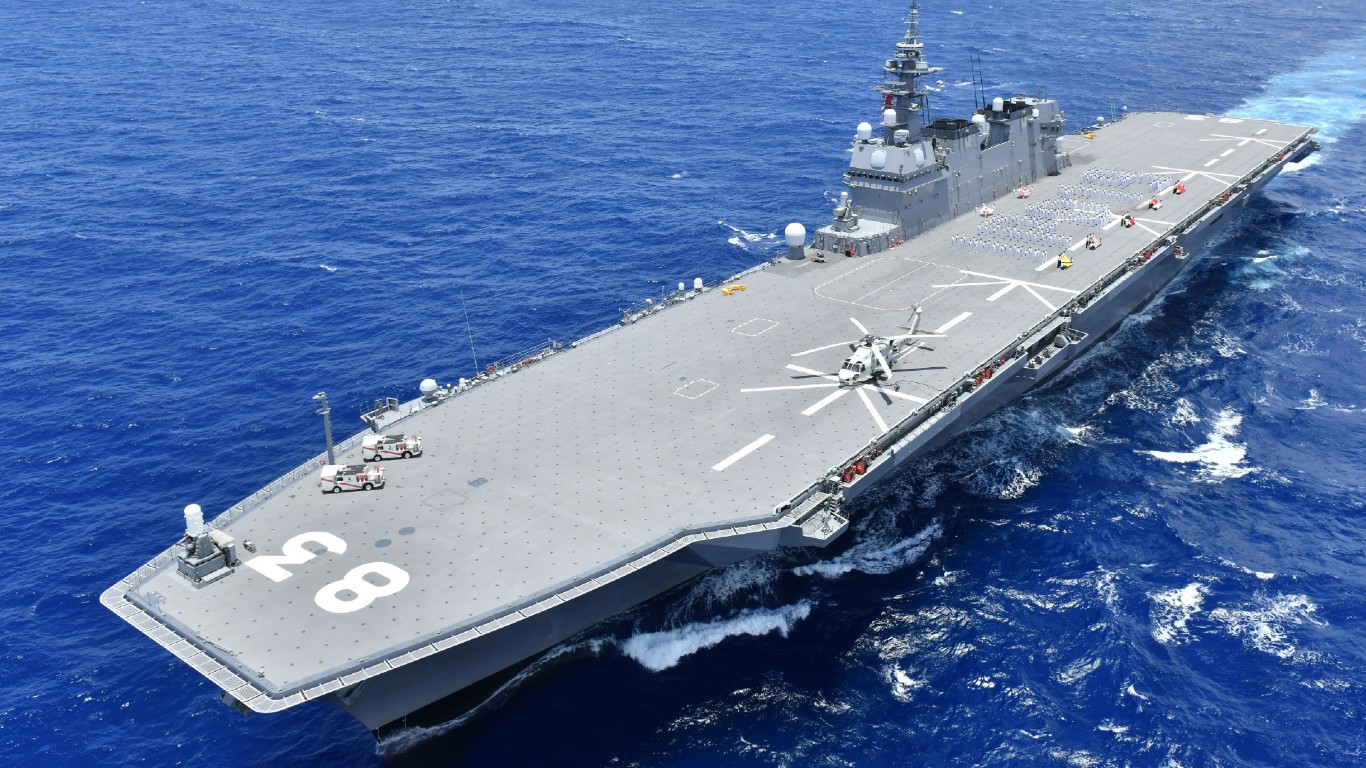
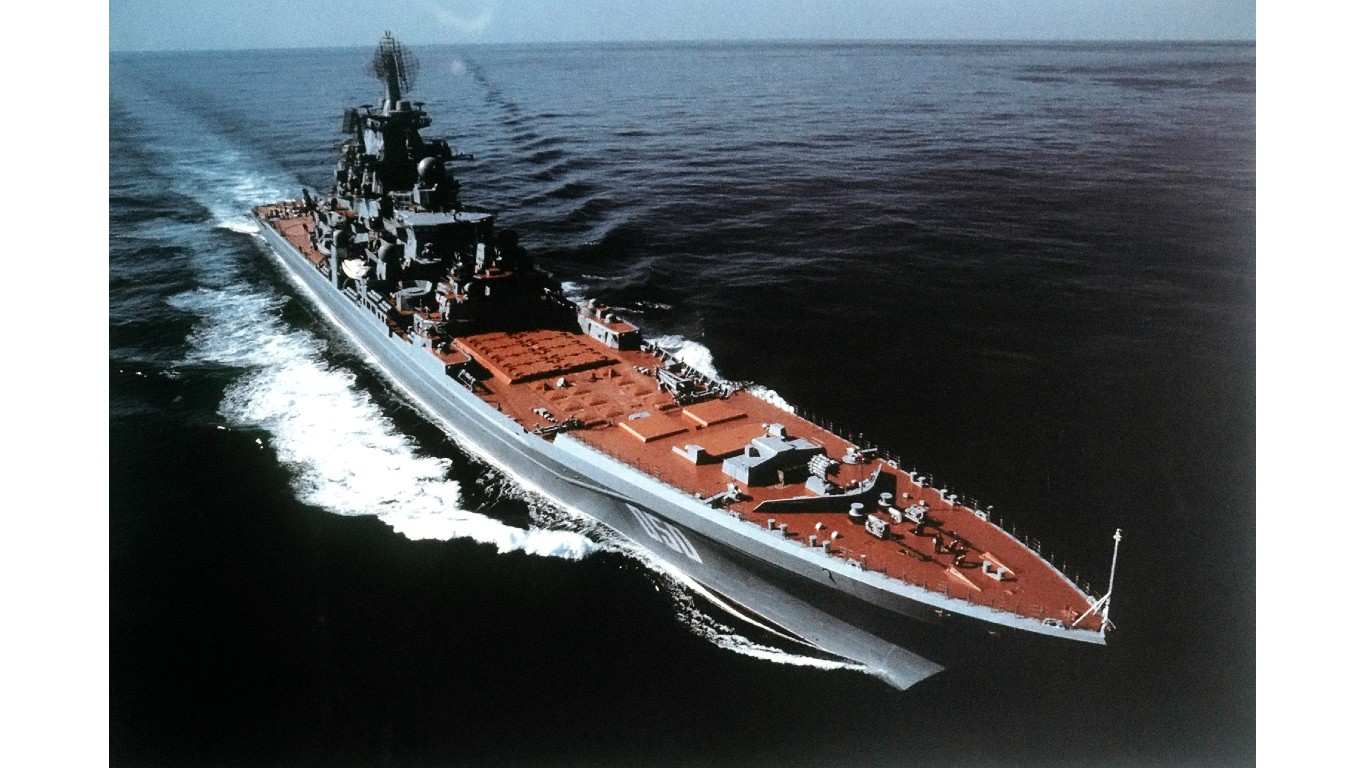
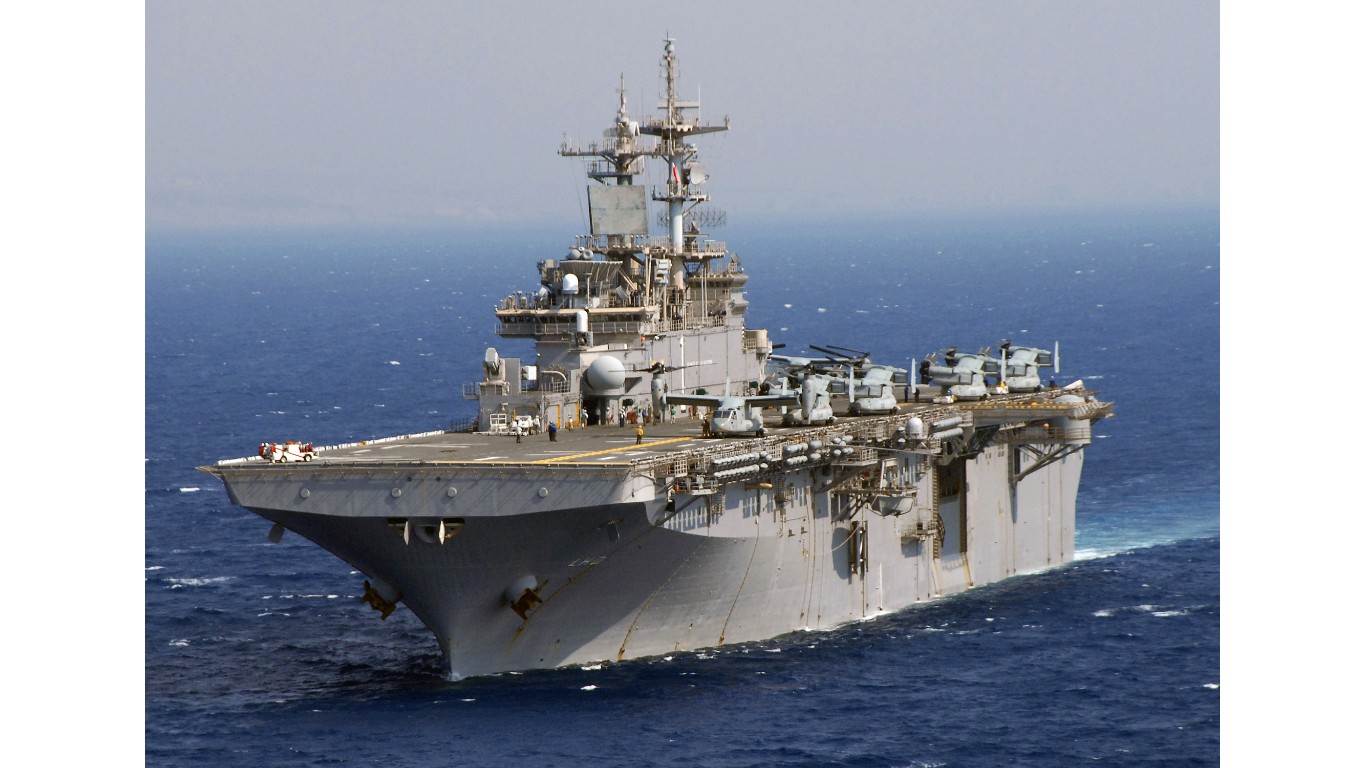
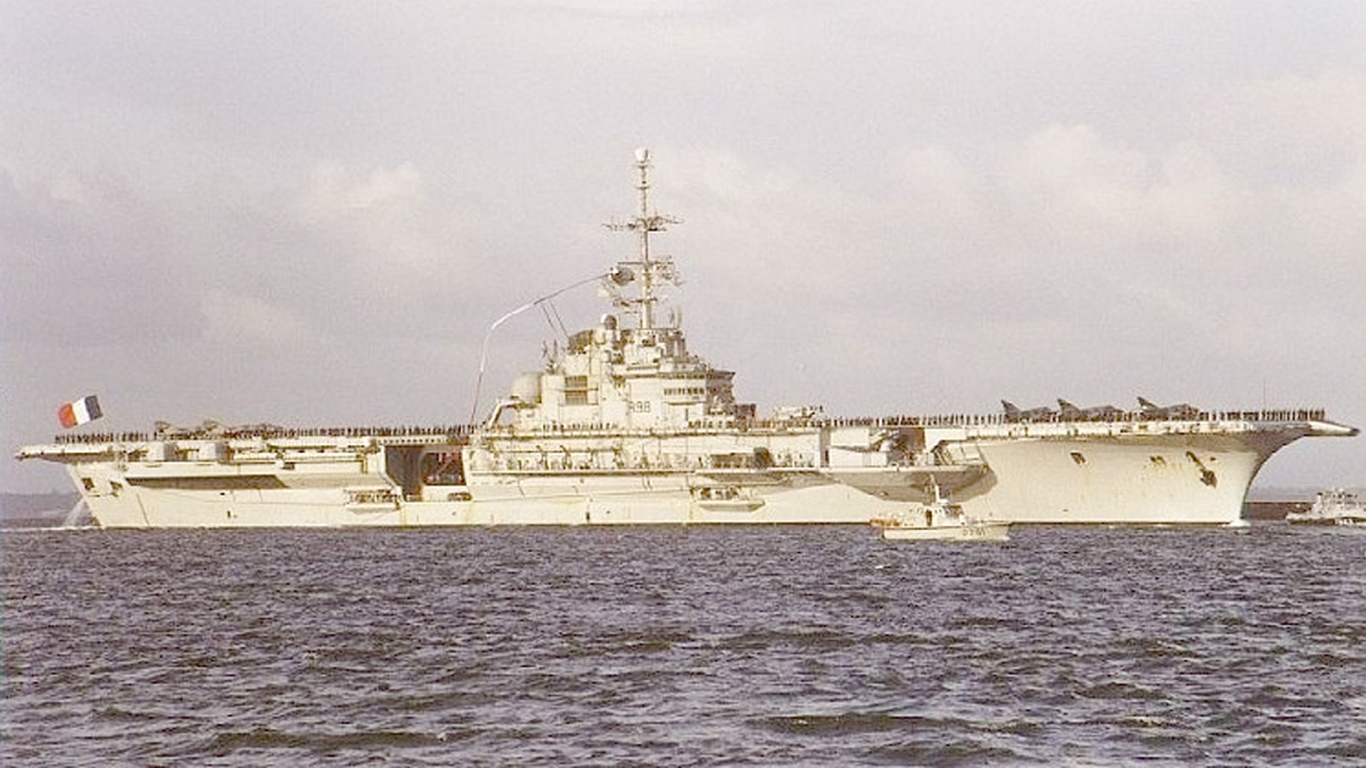
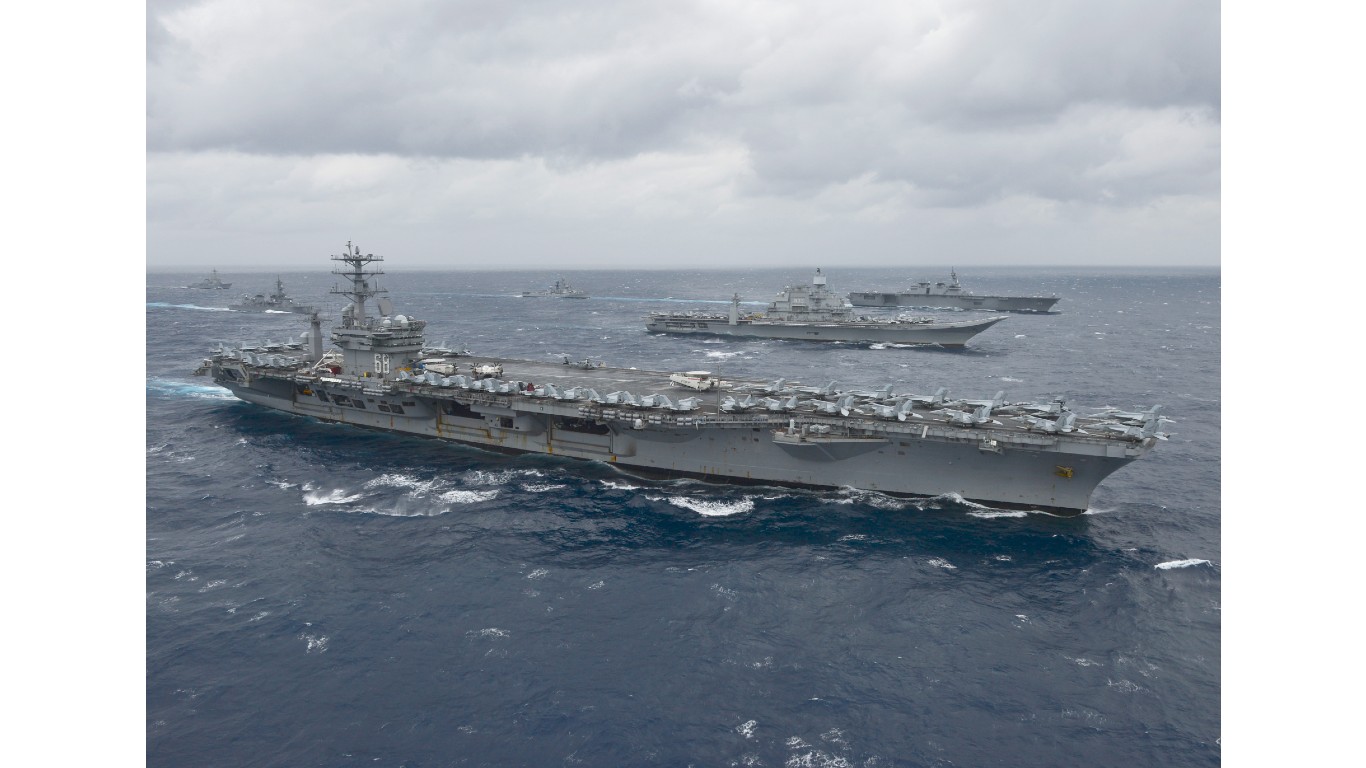
 24/7 Wall St.
24/7 Wall St.